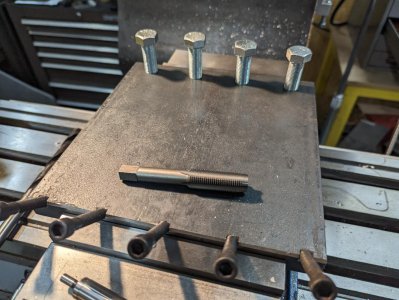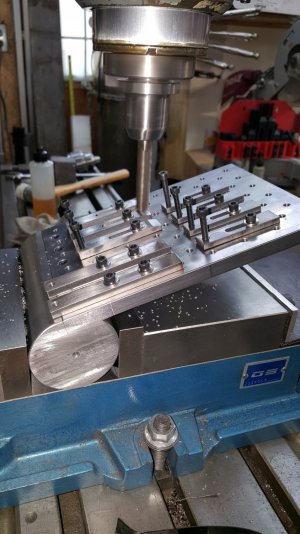- Joined
- Dec 24, 2020
- Messages
- 1,036
I'm a bit of a drive from you (probably under an hour) but I've got five welders and I'm not half bad using them. With the price of gas the local guy might be cheaper in the long run, but I wouldn't take a penny for it...lots of folks have helped me with similar things over the years.OP here:
I mis-poke, my apologies. The existing holes aren't 0.375in diameter. Two are 0.485in and two are 0.520in. So the plot sickens. Now I'm not sure how I should proceed.
Yes, I do not have a welder.
The only welder I know charges $85 to flip the switch on his welder.
After plugging the big holes I will be drilling new smaller holes on a grid that may overlap the edges of the old larger holes, so I think adhesive (either JB Weld or LocTite) along the entire length of the threaded plug would be more solid vs welding at both ends.
I have a Procunier tapping head to help tapping the holes once I determine which size holes to tap.
If it was me, I'd probably make plugs that were fairly snug and short enough so there would be a 1/4" or so depression on each side, plug weld over that and then machine flat. You wouldn't have any problem drilling holes through that area going forward and they would never loosen up.




